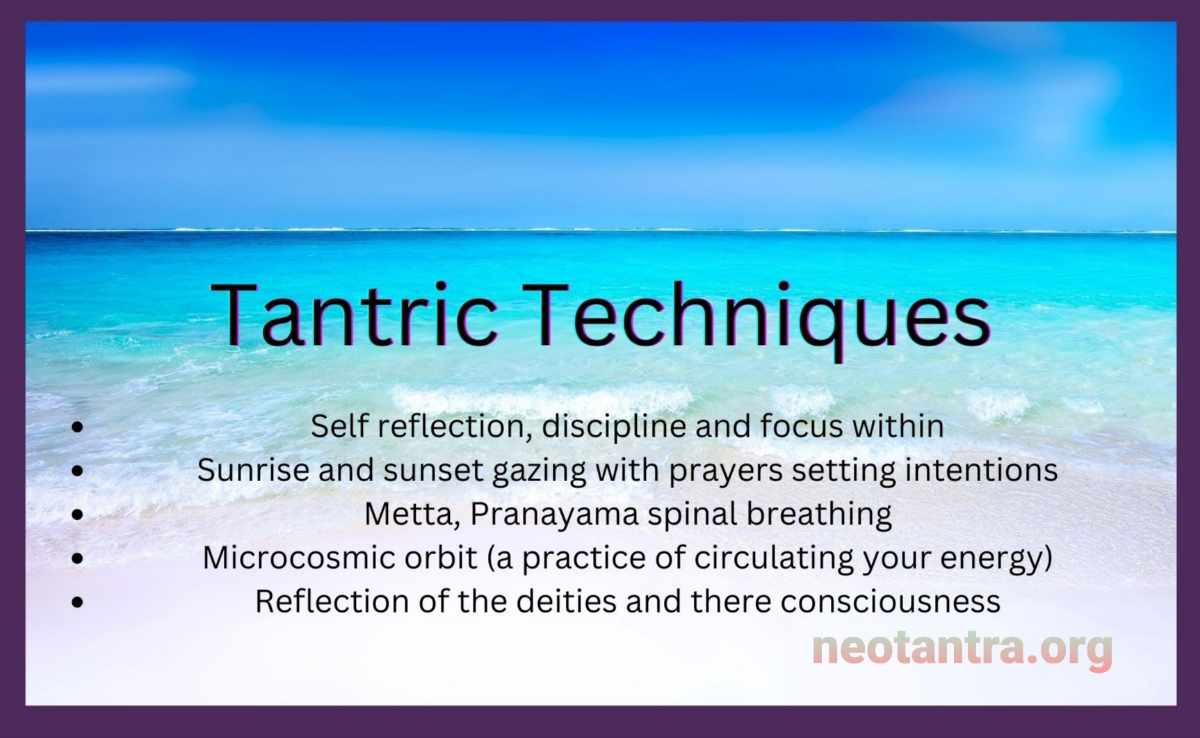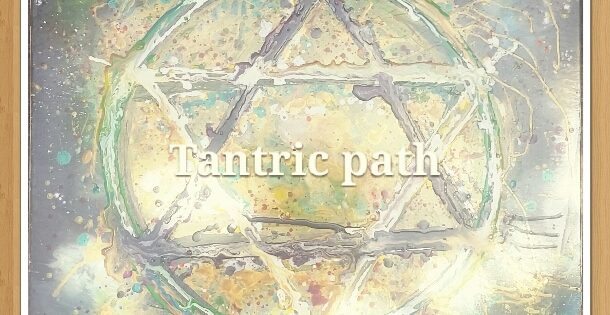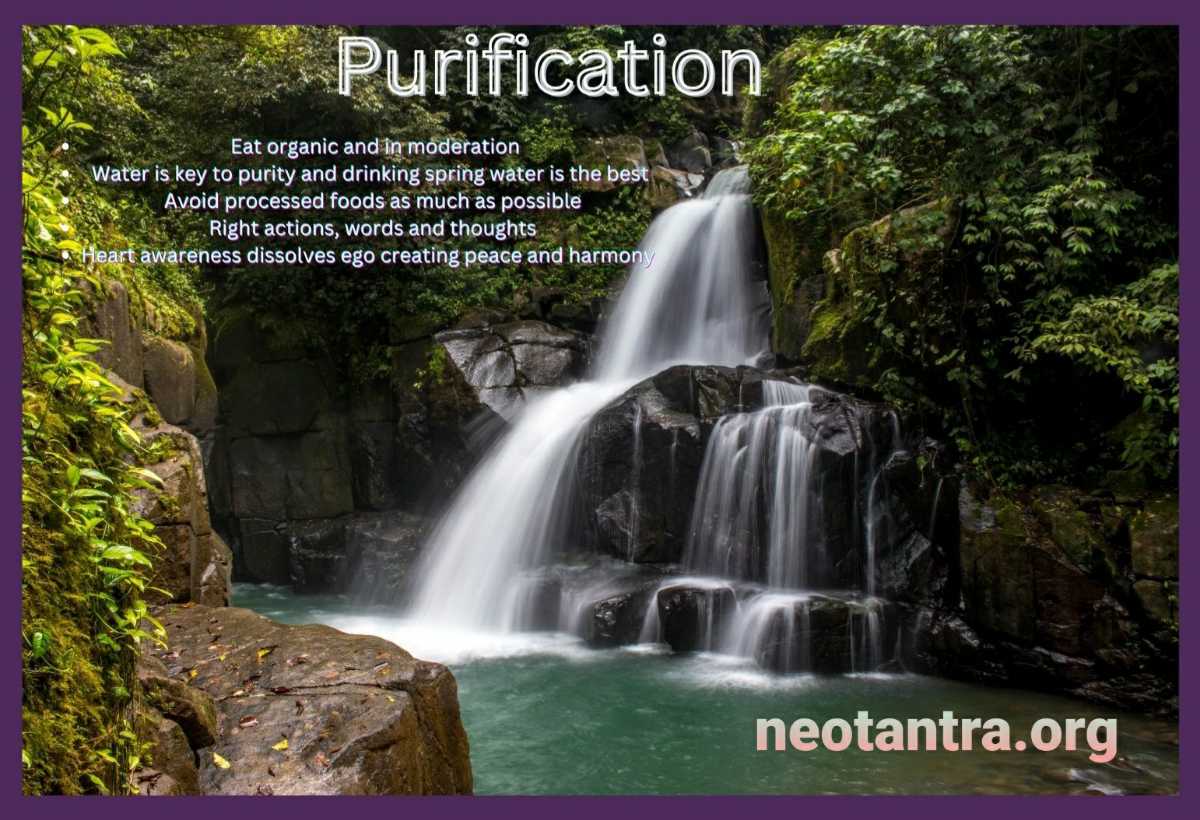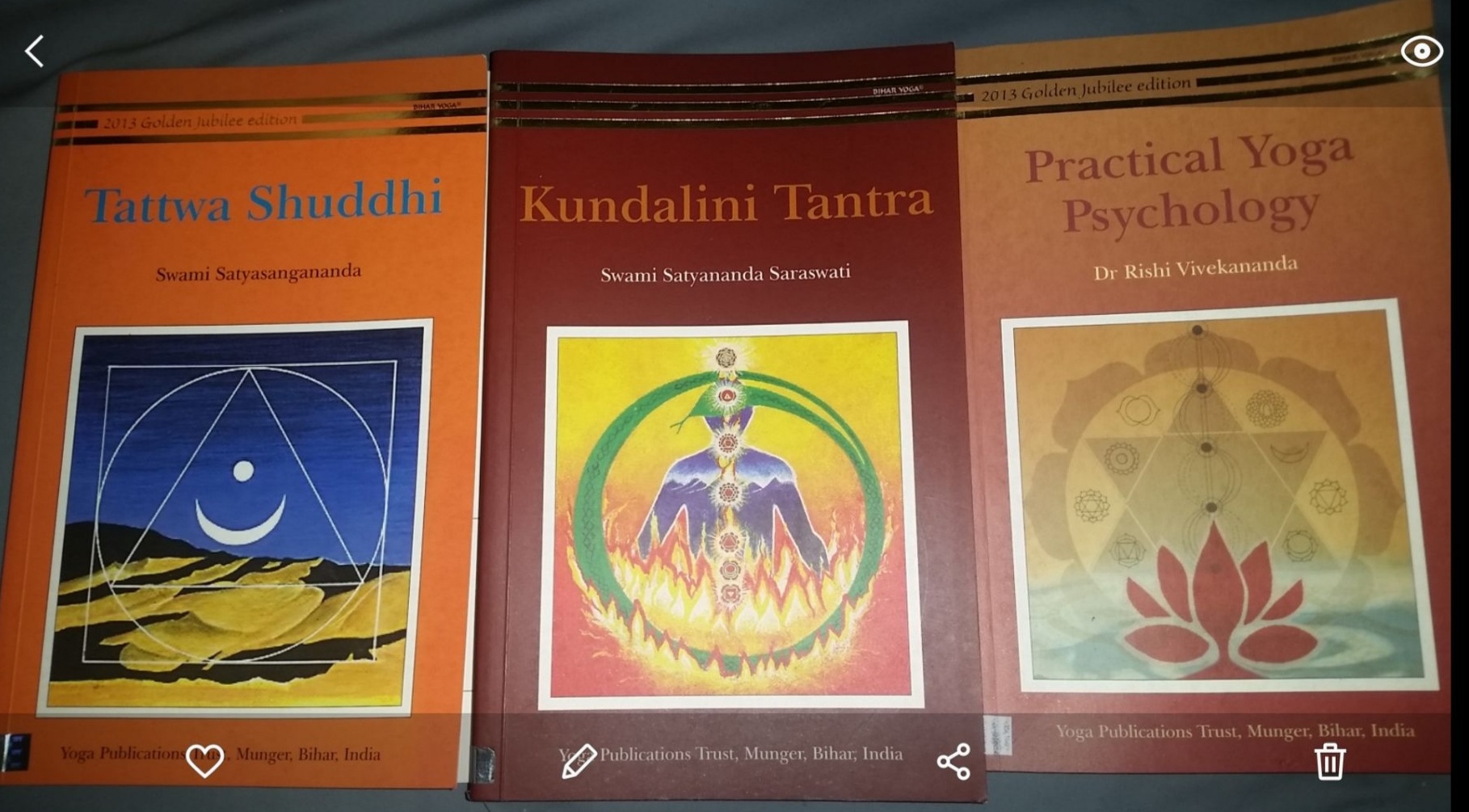Neotantra is the modern western form of Tantra
Traditionally the Tantric practices are ultimately a path to enlightenment and infinite bliss, taught in Hinduism, Jainism and Buddhism. To my understanding anything expanding consciousness, connecting to spirit and seeing the Divine in all, is seen as the Tantric path, involving rituals and practices to liberate the soul. One definition of Tantra is that it is a body of teachings, a spiritual tradition of bringing the unconscious into consciousness; realising that we are one, an expression of Shiva and Shakti in sacred union. Recommend practices:
-
rituals and ceremony usually working with the elements (Especially water and fire)
-
working with sacred geometry
-
raising (subliming) sexual energy into the heart
- transfiguration
-
sacred union
-
kundalini shake down
-
chakra awareness/activation
-
mudras, mantras
-
self reflection, discipline and focus within

-
detachment
-
sunrise and sunset gazing with prayers setting intentions
-
metta
-
preservation and cultivation of ojas
-
microcosmic orbit (a practice of circulating your energy)
-
pranayama spinal breathing
-
reflection of the deities and there consciousness
-
Sacred Union
Sacred union starts within, expanding to embrace the marriage of our masculine and feminine aspects. In Hinduism it’s Shiva (pure consciousness) and Shakti (power and energy) into oneness and a connection to all, realising the divine in all. Sacred union holds an honouring and wanting to be of service. An unconditional love and respect to your partner and acknowledging to the connection to Goddess/God essence.
Tantra is an age old tradition regarding the heart as the seat of consciousness. ‘Heart’ conveys ‘that which I truly am’, which is pure being – consciousness of love and compassion. Of the 64 arts and sciences of Tantra such as chanting, singing, dancing, playing music, drawing, writing and poetry. Each was practiced to become the best person you could be.
3 Simple beginner steps into the tantric path
1. Daily meditation of at least 20 minutes morning and night is a great starting point for the tantric path. A great way to meditate is with continued focus on your breath, in and out of the nostrils. Catching any thoughts entering your mind and coming back to full focus on breath. Imagin your thoughts are like clouds and observe them coming and going. Focus is the key to deepen in this process. Just this practice of meditation alone has lead people to an enlighten state of being. If you’re finding this too hard with the mind wandering, which can take some time to master, another technique you can use is counting each breath. Going back from 20 to 0 and then to 20 again. Then build up to 50 and then 100. I highly recommend regular meditation to train the mind to be able to focus. Personally I find 1 hour sittings and up to 2 hours the best, as my Personal experiences of deep peace and contentment comes with longer meditations and connecting with nature. Another experience from longer meditations has been to come into lucid dreaming states. This practice of meditation helps prepare your mind and nervous system for kundalini awakening, becoming more connected to spirit and body awareness. 2. The purification process is another important step on the Tantric path. As the body can be seen as a temple, it is great to be mindful of what you consume. Avoid processed foods as much as possible. Eat organic and in moderation. By eating slowly you can feel when you are getting full. To avoid over eating, only eat until you feel about 80% full. Over eating takes up extra energy in the digestive system. Water is key to purity and drinking spring water is the best. Tap water has added chemicals which are important to filter out. 3. Practicing yoga is a great step in integration of mind, body and soul. A simple and useful technique I’ve found very useful is the kechari mudra, which is done by putting the tongue to the roof of your mouth during your practices. This connects an energy circuit in the body, and bring about a sensation of connectedness between body and spirit, you can do this all the time if you wish.
Understanding the interwoven philosophies within Tantra is a life long journey and lifestyle, here are some of the different paths of Tantra
- Choosing a path of devotion (white, black, grey, pink or red hat Tantra) depends on the lifestyle you wish to lead.
-
Pink hat Tantra, is a heart based path of Tantra which is a blend between white hat and red hat where you focus on transcending lust (an energy of taking) to Love (an energy of giving). Self inquiry and doing healing work on your subconscious mind. Exploring emotional states of being. Here’s an article with more about the different colours of Tantra
- Red hat Tantra, is the left hand form of exploring sensual and sexual energy, which is only a small part of everything within Tantra, seems to be the first thing people relate to Tantra in the western world. This is red hat Tantra which generally focuses on sexual union. It is also known by some as an “impure” form of left hand Tantra.
- White hat Tantra, also know as the right hand path, is the purist path, abstaining from sexual acts in certain teachings and concerned with rituals which help liberate the soul. This is a inner journey in general, cultivating peace of mind and emotional harmony leading into blissful awareness.
- Black hat Tantra or the left hand path, involves exploring all aspects of consciousness and being, challenging social constructs and your normal set ways of being. It can be a rebellious path which was said to quicken the passage to enlightenment for some. In the left hand path, you are working towards perfection, i.e. liberation, power and paranormal abilities. It also included the practice of magic. Most scriptures of the left hand path have gone underground or been lost.
- The Kaula path is seen by some as a great form of spiritual practice. It works with both right and left hand schools of Tantra.
- Planetary tantra by John Ladhis “profound love of beauty combined with appreciation of pleasure.”
Buddhist teachings of Tantra
With in the Buddhist teachings of Tantra, a form of the right hand path is:
- Father Tantra: ‘Father Tantra’ is a name given in Tibet to ‘Mahayoga’ (Great yoga). It is a tantra based on the practices of energy. It’s the system of the subtle body and emphases the practice of blissful awareness. This tantra comprises of meditating on the emptiness aspect of Buddha nature. Father tantra includes ‘Gusyusamaja’ (Esoteric community) and ‘Yamantaka’ (Death conqueror).
- Mother Tantra: ‘Mother Tantra’ is described as yogini tantra and focuses on expanding the en lighted visualisation of all beings, with pure mind and clear light. Devotion is the foundation of this practice. This tantra is a path of practice around desire, and the brilliant aspect of Buddha nature. Mother tantra mainly includes Chakrasamvara and Hevajra and Candamaharosana.
Within Tibetan Tantra
- Kriya tantra – Visually engaging with your partner which then cultivates bliss. (External)
- Charya tantra – Smiling while in the presence of your partner which generates bliss. (External and internal practices equally)
- Yoga tantra – The cultivation of bliss while hugging. (Internal practices)
- Anuttarayoga tantra – Exploring the bliss created in union. (Sacred internal practices)
Hinduism Tantra
Communication from God and Goddess are important part of this teaching.
- Vaishanava Agamas – devotion and consider Vishnu as the supreme.
- Shaiva Agamas – devotion and consider Shiva as the supreme.
- Shakta Agamas – devotion and consider Divine Mother (Shakti) as the supreme.
Tantra in Hinduism has two main types, Agama (revealed knowledge, manuals of divine worship) and Nigama (Vedas ~ highest truth).
Agamas are the transmissions where the Goddess proposes questions and God replies.
Nigama are the transmissions where the God proposes questions and Goddess replies.
This communication between the Goddess and God is an important part of Hinduism Tantra
So when Shiva is the teacher, sharing the knowledge with Shakti, it’s referred to as Agama, and when Shakti is the teacher, sharing the knowledge with Shiva, it’s called Nigama, and also referred to as Tantra
Shaiva and Shakta teachings of Agama are generally the conversation between Shiva and Shakti.
Tantrikas (people practicing the arts of Tantra) generally enjoy an enhanced state of mind and sensory perception. Tantra the path of Ecstasy by George Feuerstein is a great book about the history and traditional teachings of Tantra. All the information contained within this site is my personal understandings of Tantra, learnt from many different sources and teachers. If you wish, please sit with these concepts and find the ones that you truely resonate with and integrate them into your life. God bless ☆♡☆ To live with great passion but detachment to the outcomes, reflecting on the omnipresence of the Divine… Best books on Tantra
What is Neotantra?
Neo-Tantra, also known as Modern Tantra, is a term used to describe the modern Western interpretation of Tantra, which emerged in the 1960s and 1970s as part of the broader New Age movement. It is a relatively recent development in the history of Tantra, which is an ancient spiritual and philosophical tradition with roots in India.
Neo-Tantra incorporates aspects of traditional Tantra practices, such as meditation, yoga, and the use of mantras and rituals, but often places greater emphasis on the exploration of sexuality and intimate relationships as a means of spiritual growth and awakening.
Some of the key features of Neo-Tantra include:
Sexual liberation: Neo-Tantra emphasizes the importance of embracing one’s own sexuality and exploring it in a healthy and consensual way. This includes practices such as Tantra massage, breathwork, and the use of sexual energy to promote spiritual growth.
Mindfulness and awareness: Like traditional Tantra, Neo-Tantra places a strong emphasis on mindfulness and awareness, which can be developed through meditation, breathwork, and other practices.
Non-dualistic philosophy: Neo-Tantra often incorporates non-dualistic philosophy, which sees all things as interconnected and part of a larger whole. This perspective can be applied to sexuality, relationships, and spirituality, helping practitioners to see these aspects of life as integrated and interconnected.
Emphasis on the present moment: Neo-Tantra encourages practitioners to focus on the present moment, rather than dwelling on the past or worrying about the future. This can help to promote a sense of peace, presence, and awareness.
Overall, Neo-Tantra is a modern interpretation of traditional Tantra that places greater emphasis on the exploration of sexuality and intimate relationships as a means of spiritual growth and awakening. It is a complex and nuanced practice that may incorporate a variety of techniques and approaches, and can be a powerful tool for personal transformation and healing when practiced with intention and care
Benefits of practicing a Tantric lifestyle
Tantric practices have a variety of objectives, depending on the specific tradition and practice. However, some common objectives of Tantric practices include:
Spiritual growth and transformation: Tantric practices are often used as a means of spiritual growth and transformation. Practitioners may seek to overcome ego-based tendencies, deepen their connection to the divine, and cultivate greater self-awareness and understanding.
Awakening kundalini energy: Kundalini is a latent spiritual energy that is said to reside at the base of the spine. Tantric practices are often used to awaken and raise this energy through the chakras, leading to spiritual awakening and transformation.
Purification of the body and mind: Many Tantric practices, such as yoga and meditation, are designed to purify the body and mind. By releasing negative emotions and patterns of behavior, practitioners can achieve greater clarity and focus, leading to deeper spiritual insight.
Honoring the divine feminine: Tantra often involves the worship of the divine feminine energy, known as Shakti. By honoring and connecting with this energy, practitioners seek to cultivate a deeper connection to the divine and to experience greater spiritual transformation.
Integration of spirituality into daily life: Tantric practices are designed to be integrated into daily life, rather than reserved for special occasions or formal rituals. By cultivating a deeper awareness of the spiritual dimensions of everyday life, practitioners can achieve greater harmony and balance in all areas of their lives.
Union of opposites: Tantra emphasizes the importance of embracing and reconciling opposites, such as light and dark, masculine and feminine, and pleasure and pain. By transcending dualistic thinking, practitioners can achieve a deeper understanding of the unity of all things.
These are just a few of the objectives of Tantric practices. Ultimately, the specific objectives of Tantric practices will vary depending on the individual practitioner and the particular tradition or lineage they follow.
Core values of a Tantric lifestyle
antra is a complex and multifaceted spiritual tradition that encompasses a wide variety of beliefs and practices. However, there are certain core values and principles that are shared across many different forms of Tantra. Here are some of the key values and principles of Tantra:
Unity: Tantra emphasizes the unity of all things and the interconnectedness of all beings. Practitioners seek to realize this unity through spiritual practices that bring them into closer harmony with the natural world and the divine.
Respect: Tantra emphasizes the importance of respecting oneself, others, and the natural world. Practitioners strive to cultivate a deep sense of reverence for all life and to treat others with kindness, compassion, and understanding.
Creativity: Tantra encourages creativity and innovation in all areas of life. Practitioners seek to tap into their own creative potential and to express themselves authentically in all aspects of their lives.
Sensuality: Tantra recognizes the importance of sensuality and the role that it plays in human experience. However, Tantra seeks to transcend mere sensual pleasure and to channel this energy into spiritual growth and transformation.
Non-dualism: Many forms of Tantra emphasize the non-dual nature of reality, and the ultimate goal of Tantra is often described as the realization of the unity of the individual self with the universal consciousness.
Devotion: Tantra emphasizes the importance of devotion to a spiritual path or practice, as well as devotion to a guru or teacher. Practitioners seek to cultivate a deep sense of dedication and commitment to their spiritual path.
Self-awareness: Tantra encourages self-awareness and self-exploration as a means of spiritual growth and transformation. Practitioners seek to understand themselves more deeply, to confront their fears and limitations, and to cultivate greater self-awareness and self-mastery.
These are just a few of the core values and principles of Tantra. It is important to note that Tantra is a highly diverse and complex tradition, and that there is no single definition or set of practices that can fully encompass its many facets. Ultimately, the best way to understand Tantra is through direct experience, and many practitioners devote their lives to studying and practicing this ancient tradition
Advanced practices of Tantra
In general, advanced techniques of Tantra are kept secret. They are only shared once a student has been initiated. It’s important to have done the preliminary practices as a foundation, to create a strong mind and nervous system to handle the increased energy flow that accompanies these practices. For more information on Tantra we recommend reading Advanced Yoga practices (AYP), which contains a detailed summary and describes the tantric practices including a focus on yoga and meditation techniques. Please share your feedback and insights or ideas on this topic… ☆♡☆ Guy Sohm




5 Comments
Ruby Taylor
March 17, 2019This is such an informative article. I’ve learnt so much from reading your insights. Thanks for sharing.
romantik69.co.il
April 4, 2022Very nice write-up. I definitely appreciate this site. Thanks!
tantra
May 14, 2022Appreciate you
zoritoler imol
May 7, 2022I’m not sure where you’re getting your info, but great topic. I needs to spend some time learning much more or understanding more. Thanks for excellent information I was looking for this info for my mission.
tantra
May 14, 2022Wonderful
Leave A Response